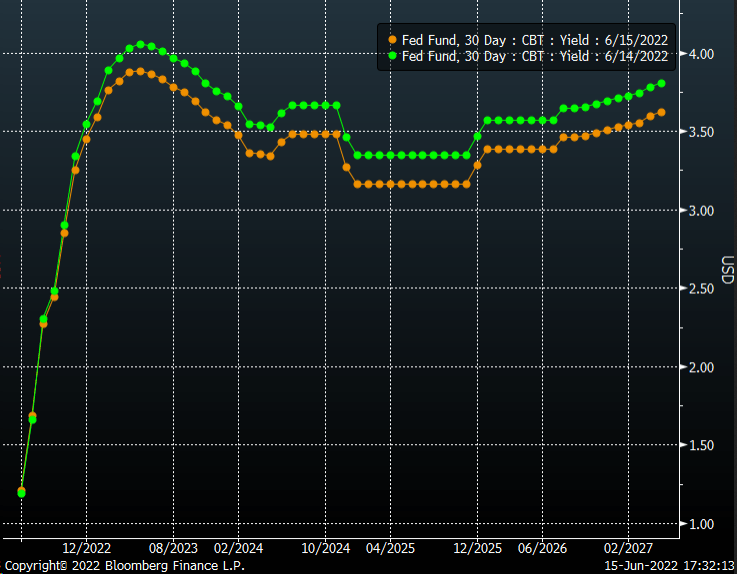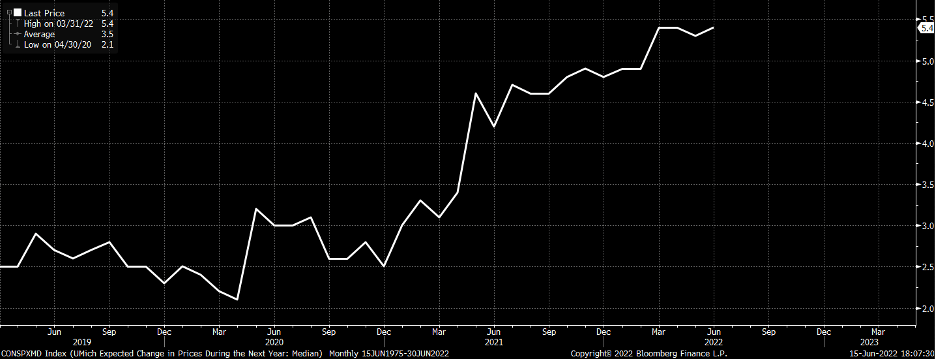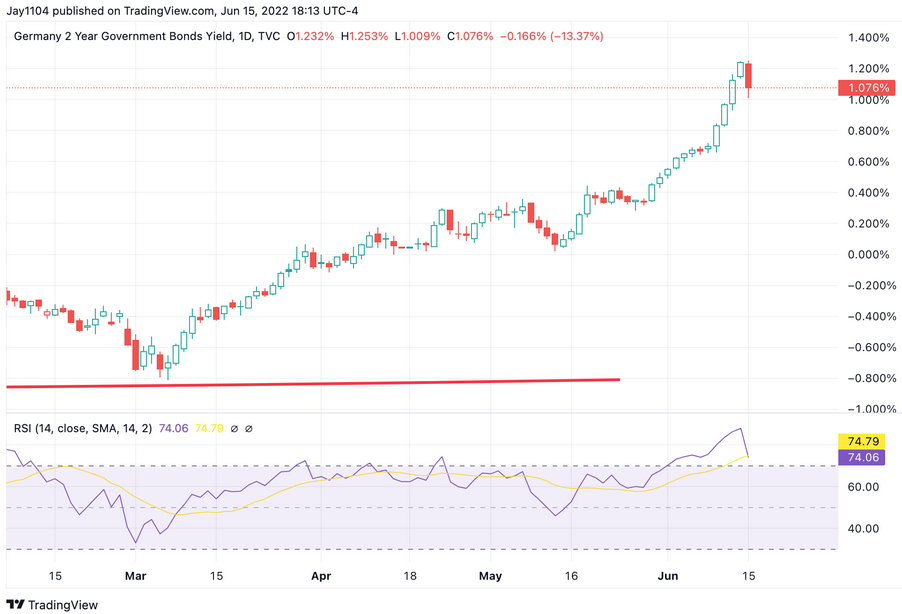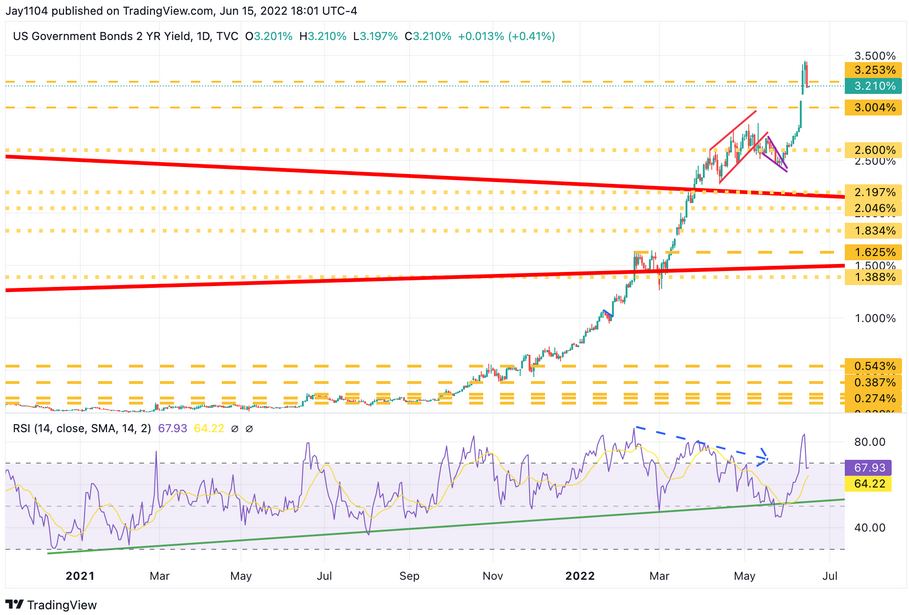Well, the Fed ended up delivering the 75 bps rate hike leaked to the WSJ on Monday. I guess I spent too much time overthinking things.
Regardless, stocks rebounded as expected, and implied volatility came down sharply as noted by the drop in the VIX. The rally started before the Fed meeting, as options expiration helped bring the VIX down some even before the FOMC.
The Fed delivered a very hawkish message based on the projections, showing rates rising to 3.4% by the end of this year and 3.8% by the end of next year. These were in line with market expectations, as the Fed fund futures noted.

The Fed also downgraded the GDP forecast and raised the unemployment rate, signaling the Fed was willing to sacrifice growth and unemployment to bring inflation down.
Powell had an excellent opportunity to hammer that message home in the press conference but failed to. Ultimately, the FOMC will be raising the rate significantly from here, which is all that matters.
There may be another 50 to 75 bps rate hike in July, but plenty more to follow after that. Meanwhile, it was clear that there was something in the CPI and University of Michigan consumer data that rattled the Fed that got them to change course so dramatically.
It may have been the lowest University of Michigan Consumer Sentiment number that came in at the lowest level ever recorded, or the fact that the rise in inflation expectations have started to anchor themselves at an undesirable level.


Regardless, stocks rallied, which was fueled by that sharp decline in implied volatility levels in the market. The S&P 500 rallied to a high of 3835 but could not hold that high, closing the day at 3,790.
We could see the gap up to 3900 close into options expiration, but I think that is unlikely unless we see a further drop in implied volatility. I see the more likely outcome being the S&P 500 continuing its decline and heading towards 3,650.

Rates
Rates moved sharply lower yesterday across the US and Europe. Rates were down most of the day following an emergency meeting of the ECB to discuss the fragmentation issue and how it plans to handle spreads between different sovereign rates across the eurozone.
For example, rates in Italy have risen dramatically more since the ECB meeting last Thursday, while rates in Germany have risen less. That has caused the spread to widen, and it continues to happen among other sovereigns; it will become a potential problem for the ECB to effectively transmit its monetary policy across the eurozone.
There was no actual outcome of the meeting, but it was enough to get investors to buy bonds, pushing rates lower.

2-Yr Rates
The US 2-yr rate took another leg down following the FOMC announcement, and given the move over the past few days; I don’t think the decline means that the 2-year is finished going higher.
At this point, the 2-year is at 3.2%, right around support/resistance at 3.25%. Ultimately, if the Fed is going to raise rates to 3.8% by the end of 2023, then the 2-year has much further to climb, potentially as high as 4.25%.

